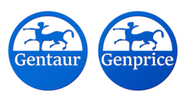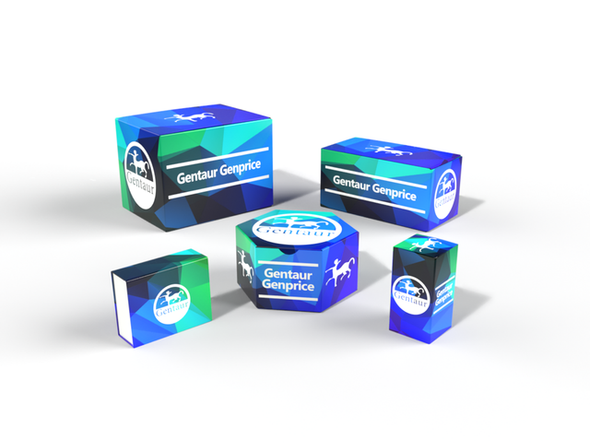Description
PAX7 Antibody [PAX7/497] | 33-184 | Gentaur UK, US & Europe Distribution
Host: Mouse
Reactivity: Human, Mouse, Rat, Chicken, Zebrafish
Homology: N/A
Immunogen: Recombinant human PAX7 protein corresponding to amino acids 301-505 was used as the immunogen for this antibody.
Research Area: Cell Cycle, Signal Transduction
Tested Application: WB, Flow, IF
Application: Flow Cytometry: 0.5-1 ug/million cells
IF: 0.5-1 ug/ml
WB: 0.5-1 ug/ml
The concentration stated for each application is a general starting point. Variations in protocols, secondaries and substrates may require the antibody to be titered up or down for optimal performance.
Specificiy: N/A
Positive Control 1: N/A
Positive Control 2: N/A
Positive Control 3: N/A
Positive Control 4: N/A
Positive Control 5: N/A
Positive Control 6: N/A
Molecular Weight: N/A
Validation: N/A
Isoform: N/A
Purification: Protein G affinity chromatography
Clonality: Monoclonal
Clone: PAX7/497
Isotype: IgG1, kappa
Conjugate: Unconjugated
Physical State: Liquid
Buffer: PBS with 0.1 mg/ml BSA and 0.05% sodium azide
Concentration: 0.2 mg/mL
Storage Condition: Aliquot and Store at 2-8˚C. Avoid freez-thaw cycles.
Alternate Name: Paired box protein Pax-7, HuP1, PAX7, HUP1
User Note: Optimal dilutions for each application to be determined by the researcher
BACKGROUND: The PAX gene family of nuclear transcription factors is comprised of nine members that function during embryogenesis to regulate the temporal and position-dependent differentiation of cells. In addition, the family is involved in a variety of signal transduction pathways in the adult organism. Mutations in the PAX family of proteins have been linked to disease and cancer in humans. PAX7 is a protein specifically expressed in cultured satellite cell- derived myoblasts. In situ hybridization reveals that PAX7 is also expressed in satellite cells residing in adult muscle. A chromosomal aberration in the gene encoding PAX7 causes rhabdomyosarcoma 2 (RMS2) (also called alveolar rhabdomyosarcoma) .

![PAX7 Antibody [PAX7/497] PAX7 Antibody [PAX7/497]](https://cdn11.bigcommerce.com/s-1rdwiq712m/images/stencil/608x608/products/483464/489293/gentaur-genprice__26005.1661610467__29809.1661628092__75433.1661676199__77988.1661684280__64362.1661692443__02085.1662049603__45075.1662119302__91744.1662191540__21580.1662291419__87158.1663498717.png?c=1)
![PAX7 Antibody [PAX7/497] | MC-2255 PAX7 Antibody [PAX7/497] | MC-2255](https://cdn11.bigcommerce.com/s-1rdwiq712m/images/stencil/590x590/products/440926/445755/gentaur-genprice__26005.1661610467__29809.1661628092__75433.1661676199__77988.1661684280__64362.1661692443__02085.1662049603__45075.1662119302__91744.1662191540__21580.1662291419__80457.1663312644.png?c=1)







